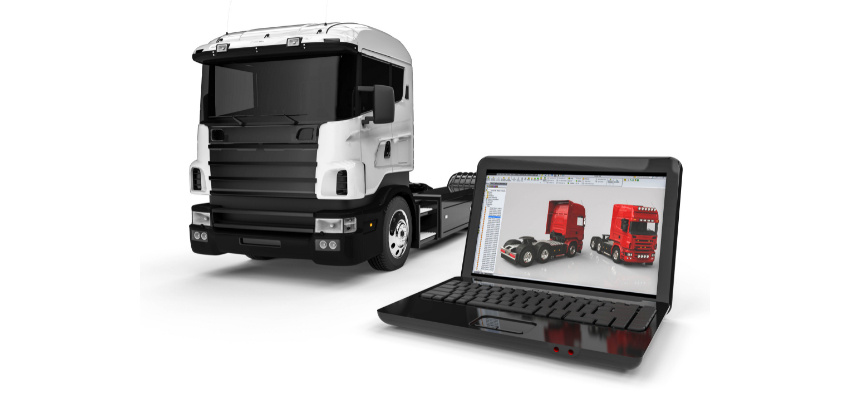Show:
A Comprehensive Guide to Logistics Software Development for Your Business
In today’s fast-paced business environment, logistics management is critical for maintaining smooth operations. From inventory handling to transportation and delivery, effective logistics ensures products reach customers quickly and efficiently. However, as businesses expand, managing logistics manually can become increasingly complex. This is where the importance of custom logistics software solutions comes in.

Custom-built software offers automation, real-time tracking, and improved decision-making, allowing businesses to stay competitive and streamline operations. In this comprehensive guide, we’ll explore how specialized software can help your business, how to choose the right development partner, and key features to look for in a logistics solution.
What is Logistics Software?
Logistics software is a tool designed to optimize various aspects of the supply chain, including inventory management, shipment tracking, and route planning. Custom solutions help businesses automate routine tasks, reduce operational costs, and gain real-time insights into their operations. The software can integrate with existing systems and provide a comprehensive platform for managing the entire logistics process.
These systems range from simple inventory management tools to more complex solutions that handle fleet management, order processing, and customer relations.
Why Your Business Needs Logistics Software
With the increasing demand for efficiency, logistics management has become a competitive factor in many industries. Implementing logistics software development offers several advantages:
- Operational Efficiency: Automating time-consuming tasks such as inventory tracking, order management, and transportation reduces manual errors and saves valuable time.
- Cost Savings: Software can identify areas for cost-cutting, such as optimizing delivery routes and reducing fuel consumption, leading to significant cost reductions.
- Real-Time Data Access: With real-time tracking, businesses gain up-to-date insights into inventory levels, order statuses, and shipment progress, enabling quick decisions.
- Improved Customer Experience: On-time deliveries and accurate order tracking improve customer satisfaction, leading to higher retention rates.
- Scalability: As your business grows, logistics software can evolve, accommodating more complex operations and integrating new features.

How to Choose a Development Partner
Selecting the right development company is essential for creating a tailored logistics solution. Here are some factors to consider:
Experience and Expertise: Choose a partner with proven experience in developing logistics solutions. For example, here’s the logistics software development website that showcases their completed projects, including warehouse inventory management and a platform for individual package logistics. Check potential partner’s existing projects. This way, you can identify their industry knowledge and technical expertise.
Custom Solutions: Opt for a company that offers customized software. This ensures that the solution is built specifically for your business needs and integrates with your current systems.
Technology Stack: Ensure that the development team uses up-to-date technologies such as cloud computing, data analytics, and machine learning. These technologies can provide greater insights and enhance operational efficiency.
Scalability: As your business grows, your software should be able to handle increased data, users, and complex operations. Choose a partner who can provide scalable solutions that evolve with your business.
Cost-Effectiveness: While pricing shouldn’t be the sole deciding factor, ensure the project is within your budget. Evaluate the cost of development against the value it will bring in terms of improved efficiency and reduced operational costs.
Support and Maintenance: After the software is deployed, continuous support and maintenance are crucial. Select a company that offers ongoing assistance to resolve issues and make necessary updates.
Reputation and Reviews: Look for a partner with positive client testimonials and case studies that demonstrate their success in developing logistics solutions.
Security and Compliance: Since logistics software handles sensitive data, make sure your development partner follows industry-standard security protocols and complies with necessary regulations.

Key Features of Logistics Software
When developing logistics software for your business, ensure the solution includes the following features:
- Inventory Management: A good system should track stock levels, monitor usage, and automatically reorder products as needed. This helps businesses avoid stockouts and overstocking, both of which can be costly.
- Route Optimization: Optimizing delivery routes saves time and reduces fuel consumption. Software that factors in traffic conditions, vehicle capacity, and delivery schedules can significantly improve efficiency.
- Real-Time Tracking: Businesses and customers alike benefit from being able to track shipments in real time. This reduces uncertainty and allows for better communication with clients.
- Order Management: Integrating order management systems with logistics software allows for seamless processing of orders. From order creation to shipment and delivery, the entire process is tracked and monitored.
- Fleet Management: For businesses that own fleets, logistics software should help track vehicle health, usage, maintenance schedules, and driver performance, ensuring smooth operations.
- Reporting and Analytics: A well-rounded logistics solution includes detailed reporting tools that offer insights into key metrics such as delivery times, costs, and inventory turnover. This data aids in making more informed decisions.
- Supply Chain Integration: Seamless integration with suppliers, warehouses, and distributors ensures that all components of the supply chain are connected, improving coordination and reducing delays.
- Customer Management: Efficient customer data management enhances communication, tracks preferences, and allows for a more personalized experience.
The Logistics Software Development Process
The process of developing logistics software involves several key stages:
- Requirement Gathering: Start by defining your business needs and identifying pain points. Work closely with your development team to outline what features you require in the software.
- System Design: This phase involves creating a blueprint of the software’s architecture, ensuring that it meets your requirements and integrates seamlessly with your current systems.
- Development: During this phase, the development team builds the software according to the approved design. They will focus on functionality, scalability, and integration.
- Testing and Quality Assurance: Thorough testing is performed to ensure that the software works as expected. This includes identifying bugs, checking for system vulnerabilities, and ensuring performance is up to standards.
- Deployment: Once testing is complete, the software is deployed and configured to work with your business processes. Training is often provided to ensure your team can use the system effectively.
- Ongoing Support and Maintenance: Logistics software requires continuous updates to keep it running smoothly and to address new challenges or technological advancements.
Final Thoughts
Custom logistics software is an invaluable asset for businesses looking to streamline their operations, improve customer satisfaction, and stay competitive in an ever-evolving market. By partnering with the right software development company and focusing on the essential features, you can create a solution tailored to your unique business needs.
Implementing a custom solution offers significant long-term benefits, including cost savings, enhanced efficiency, and greater scalability. With the right software in place, your business will be better equipped to manage complex logistics tasks, meet customer expectations, and position itself for growth.

 Return to Previous Page
Return to Previous Page








